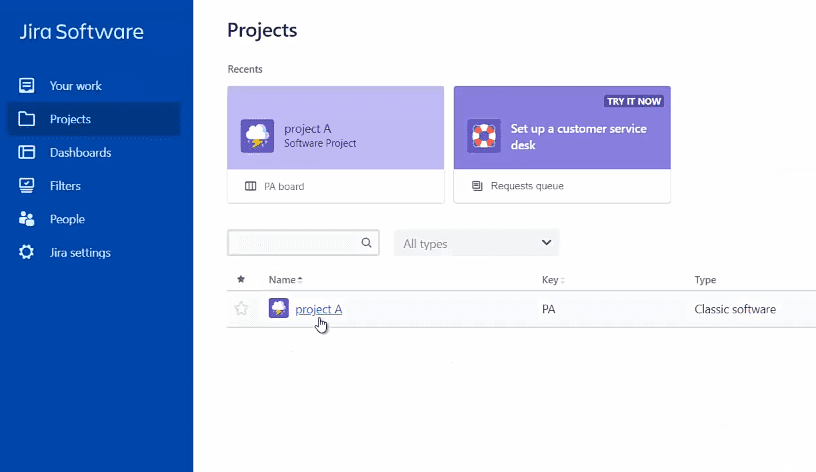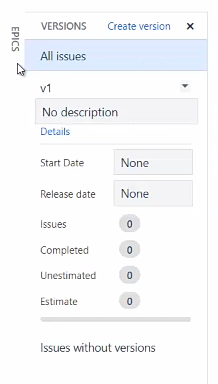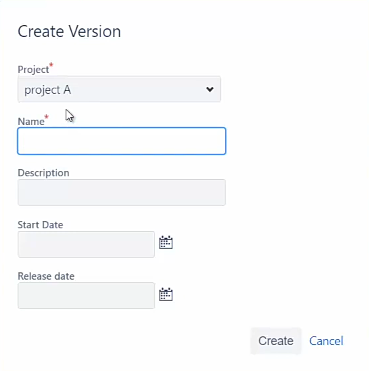What are Components,Release Versions and How they are Created in Jira?
Last Updated :
14 Feb, 2024
Jira is a popular project management tool, it offers the most powerful features for organizing and tracking your software development process. These features are Components and Releases, the two most essential elements for structuring your project and streamlining delivery. This guide delves into a complete understanding of these terms, creating them in Jira software, and uplifting their potential for efficient project management workflow.
On the other hand, The Releases represent a specific version of your software that you delivered to end users. Where each release includes new features, bug fixes, and other updates. Consider a new mobile app version with different enhanced functionalities dedicated owners
What is a Components?
You can think of components as building blocks of your project. They categorize specific parts or functionalities within your software, allowing for focused development and bug tracking. Imagine dividing your website into components like “Login,” “Search,” and “Shopping Cart.”
What is a Releases?
Releases exactly represent the specific versions of your software that are delivered to end users. Each release bundle consists of new features, bug fixes, or other updates. You can consider it a new mobile app version with enhanced features as a release.
Creating Components
Step 1: Navigate to your project

Navigate to project
Step 2: Click on the component.
Click on “Settings” > “Projects” > “Components.”

Component
Step 3: Click “Create Component.”

Create component
Step 4: Enter All Details
Enter a descriptive name and optionally, a description for your component.

Component popup
Step 5: Add Component to Issue

Add the component to the issue
Now here your newly created component will appear in the list, ready to be assigned to issues and also used for filtering.
Creating Releases
Next is creating Releases, which can be managed within your project versions:
Step 1: Navigate to your project

Navigate to Project
Step 2: Click on “Project settings”> “Versions.”

Option of version in the vertical bar
Step 3: Click “Create Version.”

Version window
Step 4: Enter a name and release date for your version

Version details
Step 5: Click “Create Version.”
Now after filling in all details hit “Create” to create a version.
Here your new release is created, and you can now associate any particular issues with it.
Relationship between Components and Release Versions
While the components and releases offer distinct functionalities, they work hand-in-hand for improved project management throughout the whole software development process:
- Focused On Development: You can assign issues to specific components, enabling the developers to focus on targeted modules within the release. Imagine it as a developer working on the “Search” component meanwhile, others tackle the “Shopping Cart” for the upcoming release.
- Tracking The Version: You can associate issues with the releases to track down all the changes and fixes included in each of version. This will provide a clear visibility into what’s delivered and also effect in enhancing communication with the users.
- Reporting Enhanced: Generate the reports based on both components as well as releases to gain more valuable insights. Identify the areas for improvement by analyzing the different trends and performance metrics across different modules and versions.
Best Practices
Optimizing your use of components and the releases simply involves adopting the best practices :
- Component Leads: You can assign dedicated owners to specific components to promote accountability and knowledge sharing for ease of process.
- Release Cycles: You can also establish regular release cycles just to maintain a predictable delivery rhythm and meet user expectations as much as possible.
- Integrations: Profitable integrations with other tools such as Git for streamlined workflow management and improved traceability throughout the process.
- Documentation: The clear and neat document in your component and release is the strategy for efficient team collaboration and knowledge transfer.
Conclusion
By having complete understanding and effectively utilizing the components and releases, you can also transform your complete Jira experience, fostering organized development, transparent communication, and ultimately, successful software delivery to users.
Share your thoughts in the comments
Please Login to comment...